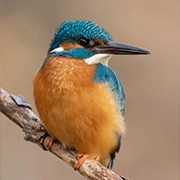Saffron Finch Wonders

The Saffron Finch, a vibrant member of the tanager family, graces the South American landscape with its striking presence.
The male of the species boasts a brilliant yellow plumage complemented by an orange crown, a feature that sets it apart from other yellow finches, save for the Orange-fronted Yellow Finch.
Dear Lykkers. The female Saffron Finch, while similar in hue to the male, often presents a slightly more subdued coloration. In the southern subspecies, S. f. pelzelni, females are distinguished by an olive-brown shade with pronounced dark streaks.
Identification Tips
Male Characteristics:
Look for a bright yellow body and the distinctive orange crown.
Female Characteristics:
The Rhino Reintroduction Story: Bringing Giants Back to the Wild!
7 Amazing Facts About Starfish That Will Leave You in Awe!
You Won’t Believe These 5 Fascinating Facts About American White Pelicans!
Rabbits: Gentle Companions for a Loving Home.
Polar Bears in Peril: Understanding Their Role in the Arctic Ecosystem!
The Vibrant River Kingfisher: Nature’s Tiny Jewel!
Females are generally less vivid in yellow or show an olive-brown coloration with dark streaking, particularly in the S. f. pelzelni subspecies.
Habitat
The Saffron Finch is commonly found in open and semi-open lowland areas, avoiding the dense Amazon Basin.
Human Proximity:
It thrives near human settlements and is often seen in suburban locales and visiting bird feeders.

Distribution
This species enjoys a broad range across South America, from Colombia and northern Venezuela to western Ecuador, Peru, eastern and southern Brazil, Bolivia, Paraguay, Uruguay, northern Argentina, and Trinidad and Tobago.
Introduced Locations:
The Saffron Finch has also been introduced to Hawaii, Panama, Puerto Rico, and other regions.
Behaviour
Human Tolerance:
The Saffron Finch is known for its tolerance of human activity, often nesting in cavities close to or within human structures.
Mating and Territoriality:
Males exhibit polygamous and territorial tendencies, sometimes leading to their unfortunate use in caged combat for human entertainment.
saffron finch facts 🦜 calling 🎶 tanager from South America
Video by Amazing Planet!
Breeding
During the breeding season, the Saffron Finch typically opts for cavity nesting, utilizing abandoned nests of the Rufous Hornero, bamboo branches, or even spaces under house roofs.
Mating Habits:
Males may mate with multiple females and defend their territory vigorously.
Similar Species
The Saffron Finch can be confused with the Orange-fronted Yellow Finch.
Key Difference:
The Orange-fronted Yellow Finch can be identified by its orange frontal patch.
Conservation Status
The Saffron Finch is currently listed as Least Concern on the IUCN Red List, indicating a stable population without immediate threats to its survival.
The Saffron Finch stands out not only for its stunning plumage and adaptability but also for its remarkable ability to thrive alongside human activity. Its widespread distribution and stable conservation status make it a fascinating species for bird enthusiasts and eco-tourists alike. Whether observed in its natural habitat or near suburban bird feeders, this vibrant bird serves as a testament to the beauty and resilience of wildlife in our changing world.

 · Animal Team
· Animal Team